Family visits to Bluebell woods
Despite the almost unseasonable cold weather we’ve experienced this month, we’ve not been short of visitors to Oxlip Wood.
Bluebell visits in East Northants are not uncommon for families to get involved with at this time of the year, but somehow the lure of visiting a really wild, ancient woodland has appealed even more to the families that have chosen to visit Oxlip Wood.
Walking in wild woods is a great adventure for all
It seems there’s a real fascination about exploring a place without paths, except those made by the animals that live there. I shouldn’t be surprised as I never grow tired of finding and following paths made by the deer, badgers and foxes that live in the wood.
I often equip the children with paper bags to collect things they find on the ground along the way. (feathers etc) I’m a great believer in encouraging children to develop their observational skills, which experience has shown me are sadly lacking in many of those who visit.
I notice similar traits in the adults, who are often so busy talking to each other as they’re walking along that they fail to spot things of interest, unless their attention is drawn to them, because they’re just walking along too quickly.
There’s nothing like experiencing woodland family fun by allowing the children to take the lead, picking their way through the undergrowth and acting as guides to the adults – they love it.
Practical life lessons in risk taking
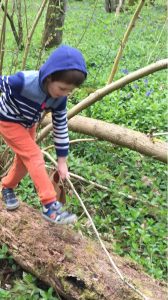 We make sure all our visitors are not faced with risky environments that are considered beyond their abilities to cope with, with areas we allow visitors to enter being risk assessed ahead of their visit.
We make sure all our visitors are not faced with risky environments that are considered beyond their abilities to cope with, with areas we allow visitors to enter being risk assessed ahead of their visit.
Whilst we cannot always immediately arrange for the removal of a hazard, such as a hung-up tree, we make sure we keep visitors away from potential danger if it should choose the moment they are in the wood to fall (which is very unlikely).
Lowering risks from hazards in woodland involves common sense a lot of the time, but whilst we lower risk levels associated with certain potential hazards we don’t want to remove the risk entirely, because therein lies all kinds of learning experience and sheer good fun.
For example, children just love clambering on and walking along things, but rarely get the opportunity outside of playgrounds these days. So it’s just a really exciting experience to discover a tree trunk and have the opportunity to try to walk all the way along it. However, there are some we’d allow children to engage with and others we wouldn’t..!
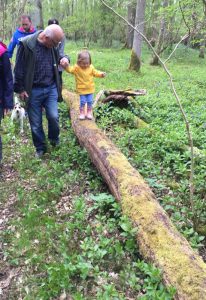 Things that have to be considered but the tree trunk walking, having usually fallen off on the first attempt, is the dryness or wetness of the surface of the wood, whether there are nettles and brambles alongside they might fall into and of course the odd branch that’s sticking out, impeding straight progress, that then has to be got by successfully without causing them to fall off.
Things that have to be considered but the tree trunk walking, having usually fallen off on the first attempt, is the dryness or wetness of the surface of the wood, whether there are nettles and brambles alongside they might fall into and of course the odd branch that’s sticking out, impeding straight progress, that then has to be got by successfully without causing them to fall off.
For the very little ones, who of course want to join in the adventure, there’s always a helping hand to steady them along their way.
Ooh, to see the delight and sense of achievement on the faces of the those who successfully complete the challenge is, quite simply, delightful to behold.
What’s more, I notice that the observational skills of the children improves markedly, with much more awareness being shown as to the environment below their feet, above their heads and immediately around them, as they continue their adventures through the wild woodland environment.
So, by the time we reached the little pond in the middle of the wood, all eyes were glued to the water to find the tadpoles.If we’d have gone there first there would have been less observation and more paddling and stick throwing gong on! Those who do want to stick throw are generally chastised by the others for frightening the creatures in the pond – fabulous outcome.
Connecting with the natural world
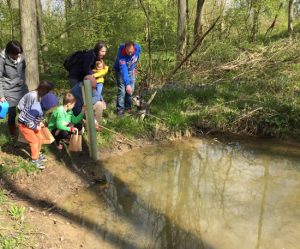 In under 40 minutes, children who were just rushing ahead and being fairly noisy, are moving more slowly, stopping to look at things and generally tuning into the natural world around them.
In under 40 minutes, children who were just rushing ahead and being fairly noisy, are moving more slowly, stopping to look at things and generally tuning into the natural world around them.
The family groups arrive at the wood to see Bluebells but are soon guided into noticing far, far more and before long begin to be affected by the soothing woodland environment.
Children and adults start commenting on far more than the vibrant blue of the Bluebells, noticing the smells and the sounds around them. They also start showing one another things they see, communicating about a shard experience, rather than the more usual parent/child exchanges which often involve the words “don’t” and “no”.
I think it’s this aspect of seeing families come together that really inspires me to do more with family groups, rather than just having groups of children or adults. There is, of course, a place for both models but I love seeing the change in family dynamics that can take place over just an hour or two – it’s so worthwhile to experience.
Visits to see the Bluebells at Oxlip Wood
We’ve still got a few sessions open to the public, see our Events page. We make a charge of £7 for adults and £3 for children (under 5’s go free). There’s also a picnic option (details on the events page). If you’ve got any questions, re. parking, suitability of terrain etc, please contact us.

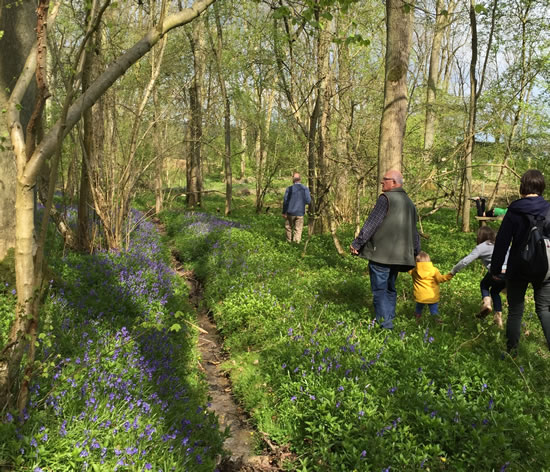
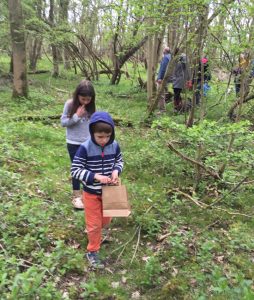
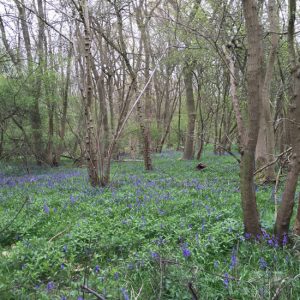
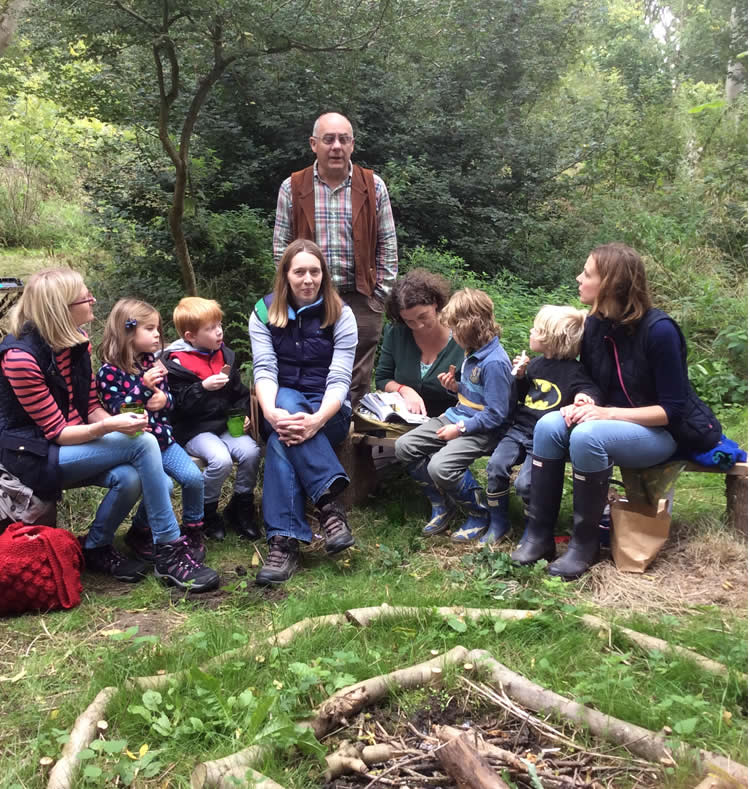

Recent Comments